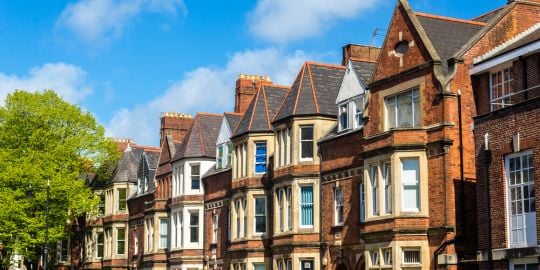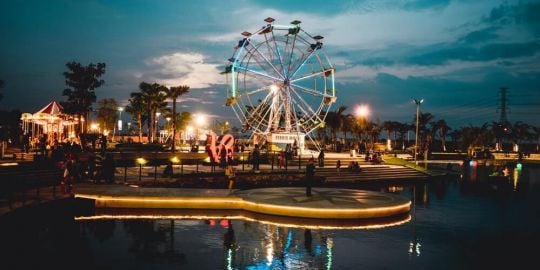Greetings!
My partner and I are looking to rehab, or build new a home in the hills of the Rio Grande or Canovanas areas. Can anyone recommend a good engineer / architect and general contractor? We are looking at either a major rehab or buying land and building new.
We would like to work with someone who can help us design a home that has sustainable / eco features and integrates well with nature as we are looking at fairly rural locations in the hills.
We are looking at having a main house of about 1500 sq/ft (possibly 2 stories or elevated for views) and an additional dwelling of around 700 square feet.
Thank you for any help!
Building in the hills of Rio Grande / Canovanas
Recently I purchased a property in the middle of the Island between Adjuntas and Utuado. It was a foreclosure and had been vacant for about 4 years. The house was badly laid out but structurally very solid in poured concrete and blocks. . It is two stories with about 1200 feet on both floors. it has 9 acres. Overlooks the Rio Grande de Arecibo river. It also includes a second building that has two floors with the bottom concrete and the top in wood. I asked someone at a vegetable stand if he knew anyone who does block work and he said he might and it is him and his wife who have been opening doors and windows, building walls and floors. He had a friend who does electric work and plumbing. They all know each other and have friends and relatives who work for the electric company etc. A friend of theirs has a back hoe and cleared land and pulled down a concrete stairway and all this happened because I asked the question at the vegetable stand. Since I own the property outright and am only doing renovations I did not have to get permits. The house is being redesigned beautifully and we are maximizing the incredible views with an open air plan with balconies. We do not have mosquitos so our security begins at the perimeter walls along the main road.
I contemplated building a home on our 32 acre land but with all the complications involved in building from scratch I grabbed the opportunity to buy the renovation project for an amazingly low price. It is taking a little longer than it would with a contractor but with the savings I can buy the 12 acres next to me to help preserves this fabulous jungle paradise.
I found the building on classificados online. It is in a very isolated area but a main highway allows us to travel to the north or south coast in about 30 minutes. It is important to get to know your community and you might get the best help around.
This is wonderful! Thank you for sharing your story Mrkptyn. I am very inspired by your approach. I think it is right up our alley. 
I'm a home builder in PR. There are some architects that specialize in green building design. The most well know in this topic is Fernando Abruña. Also Esteban Sennyey who lives also in the area of Rio Grande.
This is so helpful. Please message me your company contact info. Thank you!
PR is constantly being hit by many natural disasters: hurricanes (up to 408 km/h), earthquakes, floods, mudslides. Therefore, plan to build a strong house which can withstand all these. This is a rule #1 for sustainability.
Here are just several tips for building a sustainable house-
1) Site elevation: not less than 30 feet (9 m), preferable 50 feet (15 m) or more. It is very difficult to find a land higher than 15m above sea level in Canóvanas. For that, you can check floodmap on-line.
Solid bedrock would be most desirable. If on a clay location, solid reinforced piles (10 to as much as 50 feet).
2) Use cast in place reinforced concrete. Use ready mixed concrete of no less than 3000 psi. Concrete blocks may not withstand strong hurricanes and earthquakes.
3) If you build on a hill, consult site engineers regarding possible mud slides.
4) If you want to be eco-friendly and have a smaller carbon footprint:
A) Do not use Styrofoam materials;
B) Consider using concrene (it is a brand name), which is much stronger than a conventional cement. Concrene ™ is a new type of concrete, which is reinforced with graphene on the nanoscale level. It is more than twice as strong and four times more water-resistant than existing concretes.
C) Consider storing and using rain water every day, not only when there is shortage of water.
D) Green roof. They build green roofs in Miami. Green roofs protect your roof from hurricane better than conventional roof coatings. A green roof can reduce air conditioning demand in the summer by as much as 75%. An exposed roof can get as hot as 158 degrees on a sunny day, while a green roof heats to just 77 degrees. Over its lifetime, the green roof would save about $200,000 for an average house. Nearly two-thirds of the savings come from reduced energy needs for the building below it.
E) Design your house to withstand earthquakes.
You would need to do a lot of research and follow every step of construction closely. You would need to discuss with your builder all the details of your project before the start, record it. I would also recommenced an attorney to advise you on how you can protect yourself against any law suits during your construction projects. Most likely you would spend at least 10% more of what you budgeted for a new construction.
Puerto Rico has been getting natural disasters for thousands of years and people adapt. if paranoid can always consider a hobbit like structure into the hill to server as an emergency shelter. But most houses made from concrete will stand the strongest storms just fine if they are well build. The problems we often see is that some people have no clue, and their primary objective is to build cheap, they get together with clueless friends and build something with no plans, no architectural review and as many corners cut as possible. Concrete blocks will separate at the seams during a strong earthquake, but it does not have to come down on you if you do it right. PR has a population of 3.2 million people and during a typical strong storm we see under 5 deaths. Maria lost a lot of people, mostly because they needed medical attention and electricity to run their medical equipment. A lot of people have adapted since that.
What is the going cost of land there?
You seem to be very knowledgeable of all things Puerto Rico, do you know the typical costs per square foot to build 2 story structures there? I know one the mainland typical cost is around $100 a square foot for basic housing.
It definitely depends where on the mainland you are building. In California for example, it is impossible to build for less than $300/foot right now. Standard is around $350 per foot and will generally increase based on the finishes and textures you select.
Here on the island $85-$100 is generally the entry level cost to build, this of course will vary based on the finish materials you choose. High end construction can reach up to $350 and more everything comes down to the difficulty to build the structure and cost of materials being called out.
I'm building a house on a hill in Maunabo PR. Unfortunately, I did not think about how to get water there prior to construction.
How do people with houses on a steep hill in the island get water to their homes? Thank you for all your suggestions..
You need to go to your local water dept with your deed and construction permits. The water dept handles all aspects of getting water piping to your house. If it's within 50ft of the water main it's about $4300. I just went thru the process in Aguadilla.
Thank you!
The water company takes care of getting water delivered up a steep hill? Not a plumber?







